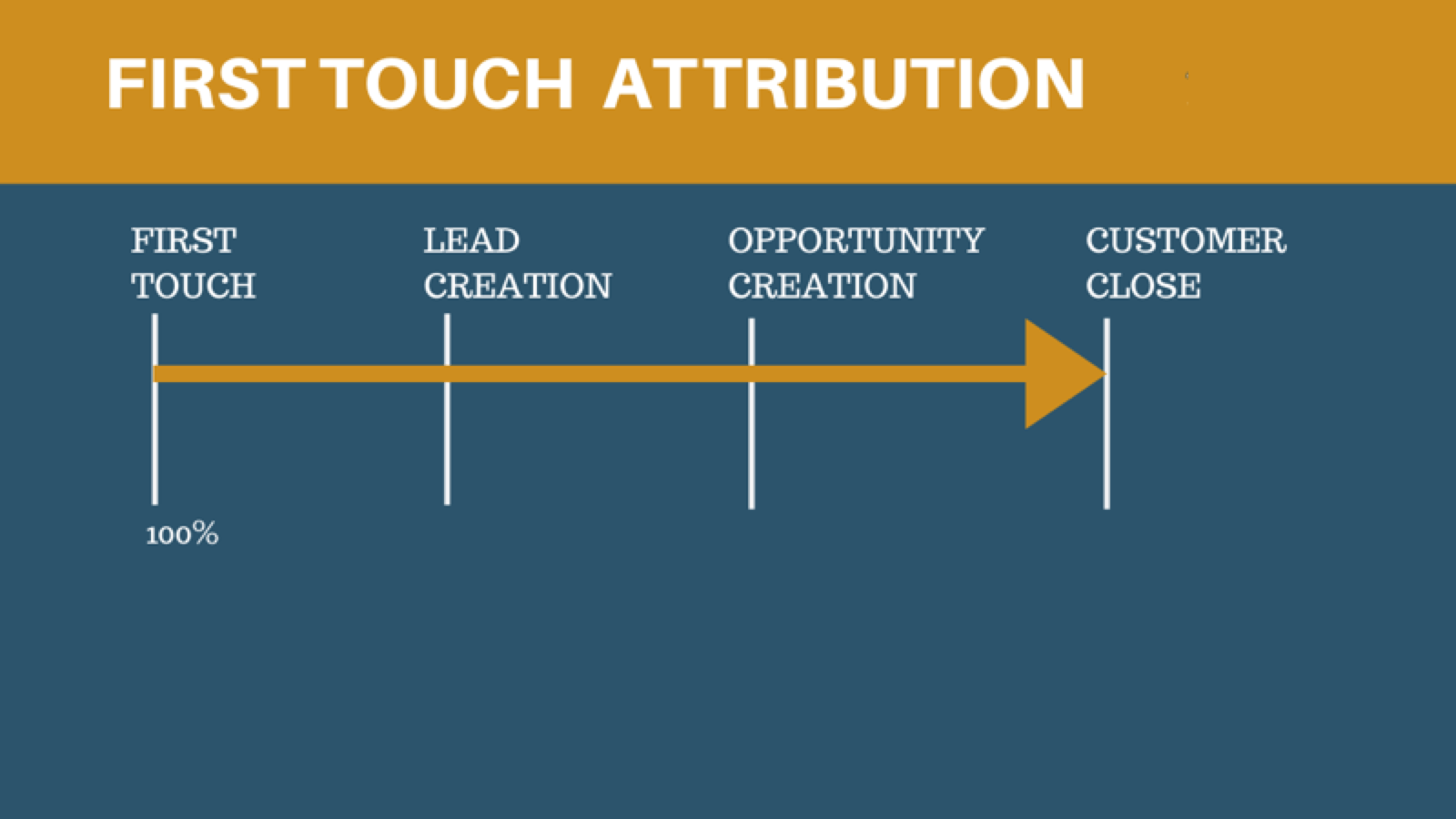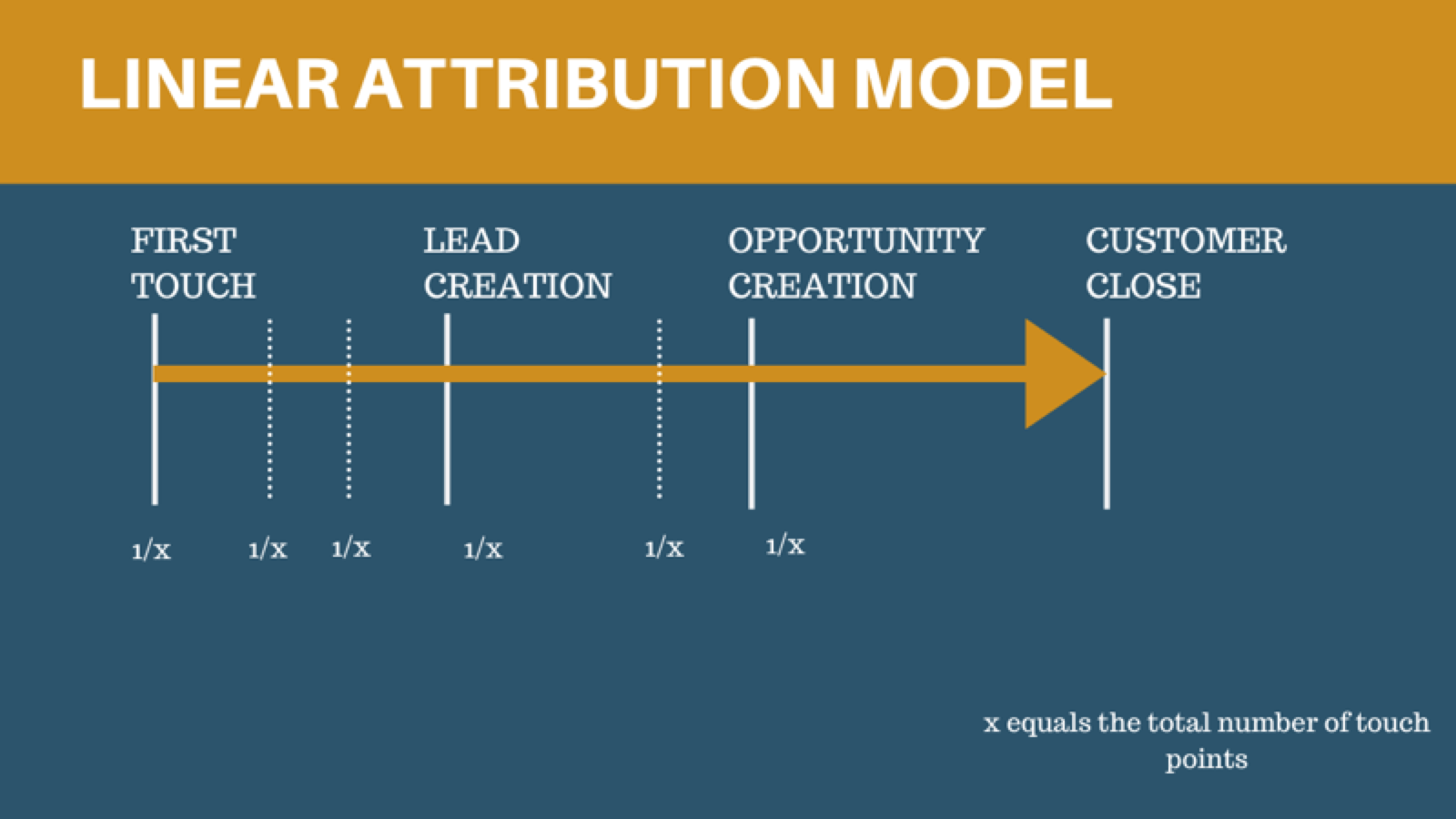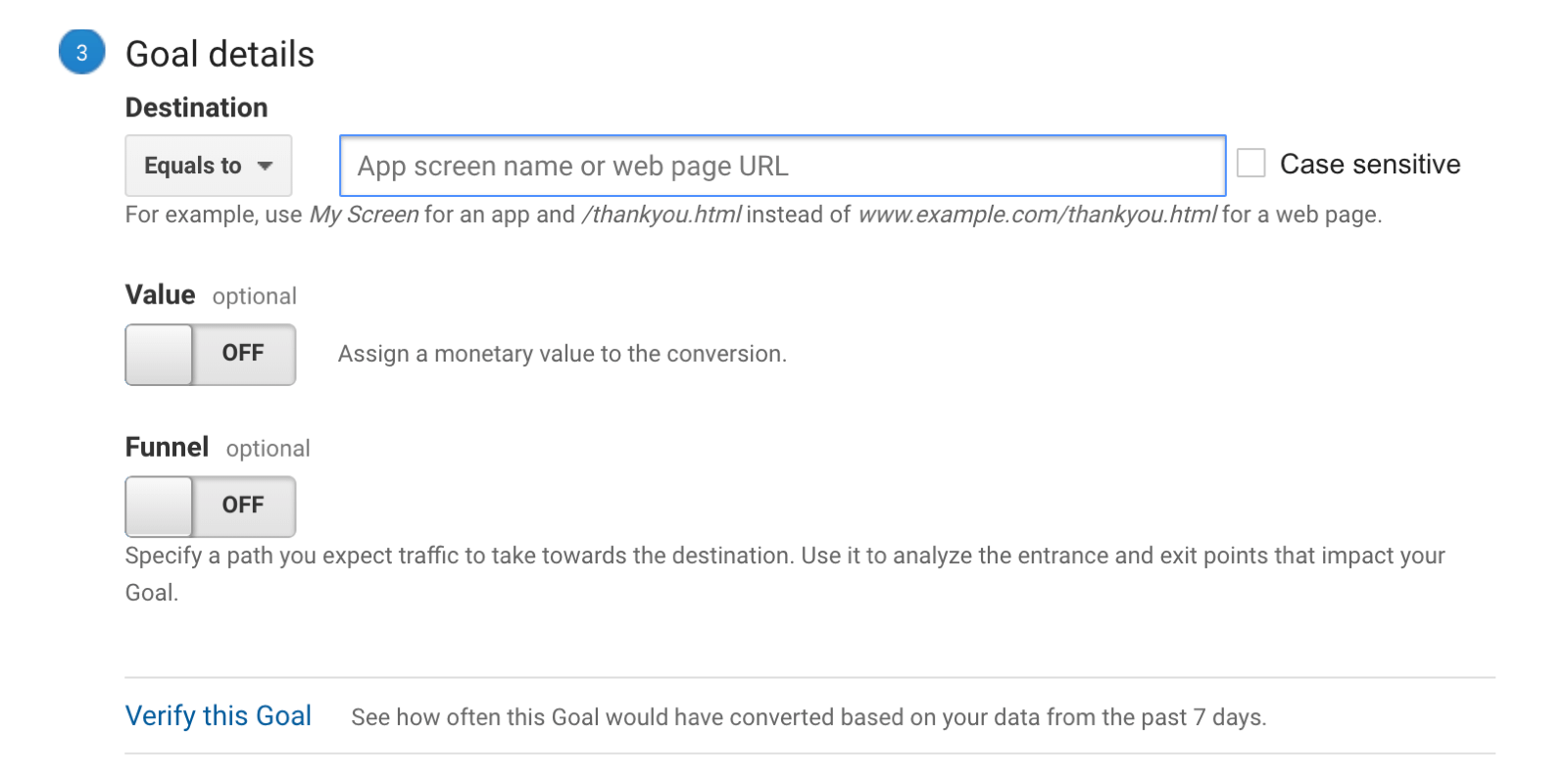9 Writing Tips to Improve Your Business Content
03/09/2020What Is Content Automation & What Is Possible for Digital Marketers Today?
05/22/20206 Social Media Attribution Models For Marketers
Do you want a better way to track your social media marketing conversions? Looking to understrand the different models that can help you better measure attribution?
In this article, you’ll discover six attribution models that can help you.
Why Attribution Matters to Marketers
One common challenge for marketers is performing in-depth analytics. You’re most likely marketing your product or service through a variety of channels so how do you know which channels are performing well and which ones aren’t?
Is the huge influx of traffic to your site from a Facebook ad or a piece of content you just published? Which of your marketing channels caused a spike in conversions that led to increased revenue?
Without proper attribution, you’d only look at vanity metrics like the number of link shares or comments. To gauge the success of a marketing campaign, you need to delve more deeply and look at things like how a lead first came in contact with your content, what pushed them to make a purchase, and so on.
With marketing attribution, you can study the full journey of how a person went from lead to paying customer, which helps you see what’s working. Maybe your Facebook ads aren’t optimized or converting at all so you’re better off pausing your campaign and re-strategizing. Or perhaps you’re getting a lot of return on investment (ROI) from your email marketing, in which case you’d want to intensify your email outreach since it works.
Without marketing attribution to help you see which touchpoints contribute to your business growth, you’ll keep wasting your time on things that aren’t bringing any positive ROI.
Now let’s look at six common attribution models and the pros and cons of each one so you can decide which model is best for your business and marketing channels.
#1: First-Touch Attribution Model
With the first-touch attribution model, you can see which channel first directed a lead to your product or drove a visitor to your website.
To visualize this, suppose a lead was first introduced to your website through a Facebook ad. Then they clicked a link on your site that directed them to a webinar. At the end of the webinar, they subscribed to your email newsletter and later converted through your email outreach. The credit for that conversion would be attributed to the first touchpoint, which is the Facebook ad, and not the email outreach.
The idea behind the first-touch attribution model is that any conversions that occur at the end of the funnel wouldn’t have been possible without the first touchpoint.

Note that this kind of model isn’t the best option for B2Bs because usually a lot of touchpoints are involved before a lead converts.
Pros
First-touch attribution is the easiest model to set up and doesn’t involve a lot of analysis and calculation. It’s simple to track and focuses on demand distribution rather than weight distribution.
Cons
This model is prone to errors. It emphasizes just the beginning of the customer journey, which only tells part of the story of how that customer was converted.
First-touch attribution makes it difficult to optimize your marketing process because you can’t say for sure what led a customer to make a purchase. A prospect usually goes through multiple touchpoints before converting. The touchpoints that made an impact, like the email newsletter in the example above, should be further optimized to increase conversion rates.
When Should You Use This Model?
The first-touch attribution model helps you measure which top-of-funnel marketing campaigns are most effective. It doesn’t give you the complete picture but it can help you optimize your lead generation process.
#2: Last-Touch Attribution Model
The last-touch attribution model is similar to the first-touch model. But instead of measuring where the lead first came in contact with your business, it attributes the whole sales process to the last touch, the end of the marketing funnel.
Last touch is usually the default setting in most attribution models. Google Analytics also uses it as the default attribution model.
This model focuses on what drove a lead to convert and ignores everything that came before the conversion.

Suppose someone did a Google search for the keyword “pink shoes,” came across your ad in the search results, and was redirected to your site. This person didn’t make a purchase at that time but later they came back directly to your site and made a purchase. In this case, the conversion would be attributed to direct traffic to your site and not the earlier Google Ads campaign.
Pros
Last-touch attribution shows what directly led a customer to convert. If you’re only interested in conversion-based metrics, this is the best model for you. It’s simple to use and doesn’t have a learning curve.
Cons
This model neglects everything that led up to a lead converting. This makes it difficult to analyze every aspect of your funnel such as whether your ads are working, your email marketing is converting, or your content marketing efforts are having any impact.
The last-touch model has the same problem as the first-touch model. It doesn’t give a full picture of what’s working and what isn’t.
When Should You Use This Model?
If you’re only concerned with conversion rates for your campaign, this is the best model for you. It helps you determine which part of your messaging works best. It could be that the copy in your landing pages is more effective than the copy in your email newsletters. This model will help you figure this out.
#3: Linear (Even-Weighted) Attribution Model
The linear model attributes credit equally to all of the touchpoints that led to a lead converting. Everything from first touch, lead creation, opportunity creation, and customer closing are all treated equally.
The main problem with marketing attribution is determining which touchpoints are most important in a customer conversion journey. Linear attribution has a simple answer to this: Give all of the touchpoints the same level of importance.

Pros
The linear model is a huge improvement from the first-touch and last-touch models. It gives marketers a more complete overview of everything that occurred from the beginning of the funnel to the end stage where the lead converts. It doesn’t decide that the middle of the funnel is more important than the bottom of the funnel but instead gives them equal importance.
This model is easy to set up and can be used to compare results from other data models. And you don’t have to worry about which touchpoints should receive credit for a conversion.
Cons
The linear attribution model doesn’t help you fully optimize, because in reality, not all touchpoints are equal.
Is your Facebook ad truly contributing more than your Instagram ad? Are social media comments more important than shares? How do you know what made a customer really decide to make a purchase when you give equal credit to all touchpoints?
Certainly, some touchpoints will make more of an impact than others. It’s important for you to optimize those touchpoints and improve the areas that aren’t contributing as much.
When Should You Use This Model?
The linear attribution model is best when you have a small team and your marketing process typically involves a long sales cycle. You can get the full picture of all of the touchpoints that lead to conversion without putting in a lot of work. This model also helps fill in the gaps that are left by the first- and last-touch attribution models.
#4: Time-Decay Attribution Model
The time-decay attribution model gives more significance to the touchpoints that are closer to where the conversion occurred than the top of the funnel. It’s a multi-touch model that’s similar to the linear attribution model.
It gives more credit to the middle and bottom of the funnel and represents them as being worth more because they’re the points that drove the lead to convert.

This method isn’t foolproof, though. Perhaps a lead interacted with your ad and signed up for your demo, and then later purchased your product through a link in a blog post. Should the blog content receive more credit than the ad or the demo? Most likely not.
Pros
Often, the touchpoints closest to the point of conversion have the most weight. This model helps you optimize those points that lead to conversions directly.
Cons
Devaluing the first touch might not always be the right thing to do. Depending on the circumstance, the first touchpoint may have played an important role in the conversion.
When Should You Use This Model?
If your business has a long sales cycle, this model could work for you. It helps you neglect the early stages of the funnel and concentrate on the later stages that led to a conversion so you can optimize lead generation.
#5: U-Shaped (Position-Based) Attribution Model
The U-shaped attribution model gives credit to three main touchpoints. It credits 40% to the first and last touch, and attributes 20% to the middle point.
It emphasizes the first touchpoint (the point of first impact where the leads come in contact with your business) and the last touchpoint (the point at which the lead converts).

In marketing, the first and last touchpoints are usually the most important but that doesn’t mean you should neglect the middle touchpoints. The middle touchpoints might be having an impact that is necessary for the lead to convert.
Pros
Unlike the first- and last-touch attribution models that place importance on just one aspect of the analysis, the U-shaped model gives equal importance to both values.
The first point of interaction of a lead with a business is just as important as when that lead converts and this model helps you optimize these channels.
Cons
There are times when the first or last touchpoint isn’t as important. When doing an analysis, you should always check if the first touch is as important as the last point.
When Should You Use This Model?
This model isn’t suitable for long sales cycles or campaigns that have to nurture leads. It’s more for when a lead engages with your content and decides almost immediately that they want to make use of your service or product.
#6: Algorithmic Attribution Model
The algorithmic attribution model is the most accurate way to measure a user’s journey from prospect to conversion. The success rate in this model is higher than others because it’s uniquely created for each business. Depending on the tool you use, this process might be done easily with machine learning or by manually entering the parameters.
Pros
You can give credit to the touchpoints that matter most to your business rather than just giving equal credit to the first, middle, and last touchpoints. It provides the most accurate data from the consumer journey.
Cons
This process is complex and involves calculations so it may require the skills of a data analyst and more advanced or powerful tools. These tools might not be available to smaller businesses because of their price points.
When Should You Use This Model?
If your business has a short, simple sales cycle, the algorithmic attribution model isn’t the best option for you. If, on the other hand, you have a long, complicated sales process that involves marketing qualified lead (MQL) and sales qualified lead (SQL) reporting, this model is for you. It would allow you to do an in-depth study on each stage of the funnel.
Note: An MQL is a lead who’s more likely to become a customer when compared to other leads. An SQL is a lead whom the sales team has qualified as a potential customer.
How to Use Social Media Attribution In Your Marketing
The social media attribution process won’t be the same for every business. Your business might start a social media campaign because you want to drive traffic to your website, increase brand awareness, or drive sales of a particular product. To make effective use of attribution, you have to break down the “why” of your campaign.
Answering this question will help you determine which attribution model you should use and how much time and effort you’d have to put into it. You need to set the goals you want to measure before you get started with attribution.
Choose a Social Media Goal for Your Campaign
These are some of the most common goals you can set:
- Email signups
- Trials and demo registrations
- Purchases
- Downloads of lead generating content
- Contact form inquiries
All of these goals are trackable, which is the whole point of attribution.
To get the most accurate picture, concentrate less on vanity metrics such as social media shares and comments, unless the whole point of the campaign is to increase engagement. Instead of just focusing on whether someone liked a post, dig deeper and see if they took any significant actions like signing up for your newsletter or buying your product.
Track Social Media Attribution for Your Campaign
After defining your goals, the next step is to develop a system for tracking them. The simplest tool for tracking your social media goals is Google Analytics.
To do an in-depth analysis of conversions, open your Google Analytics dashboard and go to Acquisition > Social > Conversions.
If you haven’t previously set up any goals in Google Analytics, you need to do that now. Click Set Up Goals to get started.
Depending on what your goals are, you need to enter the value. If your goal is to get people to take action on a landing page, for instance, set the goal type as the destination page.
This URL, when clicked, is what will be triggered in Google Analytics when a conversion is made. Remember that the link should have a no-index value so the only way this page can be accessed is by someone going through your page or email newsletter. If this page can be accessed via search engines, it would affect the data.

Use Attribution Data to Analyze Campaign Performance
The only way to know, after attribution, whether you have a positive or negative ROI is by keeping track of both earnings and expenditures.
You can calculate your social media ROI for each campaign after you’ve calculated your expenses. Here’s a simple formula to do this:
[(Revenue – Costs) x 100] / Costs
Your costs include time spent, content, social media tools, and so forth.
Calculating your ROI helps you determine whether your social media campaign needs to be optimized or scrapped entirely.
Tools to Track Social Media Attribution
If you’re just getting started, tracking social media attribution with Google Analytics is a free, easy way to begin. If you’re looking for a more robust or paid tool, check out these four options.
InLeven
InLeven is a both a URL shortener and link and conversion tracking tool that lets you monitor, compare, and analyze all of your links from different social media channels in one place. This helps you carry out more efficient marketing campaigns.
Choose any source that you want to track such as blogs, forums, pay-per-click campaigns, social networks, and so on. When someone clicks on your link, the tool analyzes the information and collects important data like the geographic location of the person, platform type, visitor type, source analysis, keywords, and more.
InLeven helps you create a detailed marketing report in real time that you can use to optimize your campaigns.
Pricing: Medium—$19–$69/month; Large—$129/month; X-Large—$259/month
Conclusion
With social media attribution, you can see which aspects of your social media marketing or inbound marketing are working and which aren’t so you know what you need to optimize and where you can stay the course.